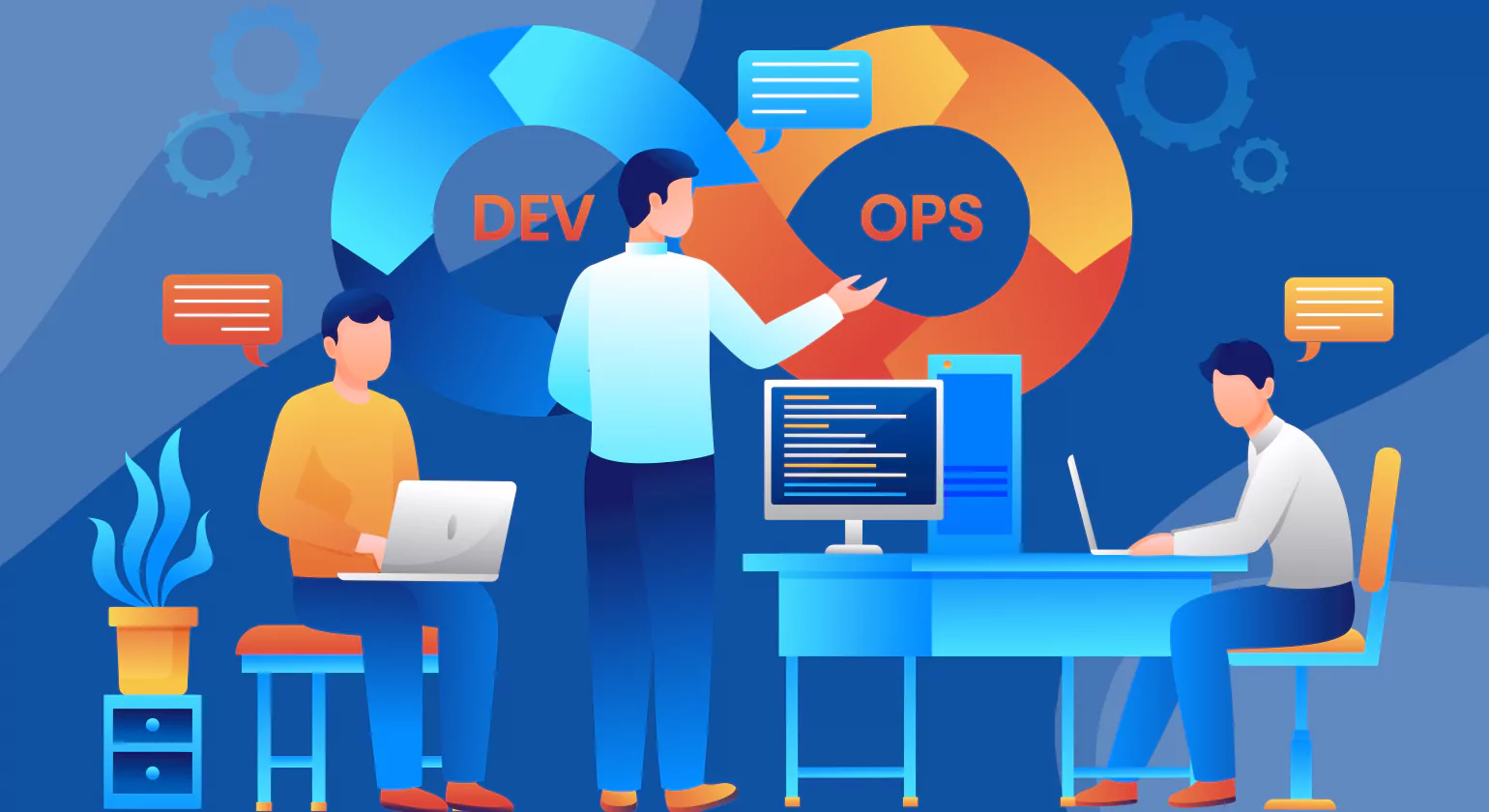Co-development software is changing the way teams work together. It allows multiple people to collaborate on a project seamlessly.
This software has become essential for businesses looking to innovate quickly and efficiently. But what exactly makes co-development software so valuable? It’s not just about sharing code. It’s about fostering creativity and teamwork across distances. In today’s fast-paced world, businesses need to adapt to stay competitive.
Co-development software offers a solution by bringing together diverse talents and perspectives. Teams can now work on projects simultaneously, breaking down barriers of time and space. This approach not only speeds up development but also enhances the quality of the final product. As technology advances, the importance of effective collaboration tools continues to grow. Dive into the world of co-development software and discover its potential to transform your team’s workflow.

Credit: www.linkedin.com
Co-development In Software
Software co-development brings teams together to build applications collaboratively. It enhances creativity and efficiency through shared expertise. This approach fosters innovation and rapid problem-solving.
Co-Development in Software
In today’s fast-paced tech world, co-development in software is not just a trend; it’s becoming a necessity. By pooling resources and expertise, companies can create innovative solutions faster and more efficiently. But what exactly is co-development, and why is it gaining so much traction?
Emergence Of Co-development
The rise of co-development is driven by the need for diverse perspectives in solving complex problems. Collaborating with other organizations or teams introduces fresh ideas and skills. This approach breaks the traditional silos, encouraging openness and shared knowledge.
Consider a situation where a startup partners with a seasoned software company. The startup brings fresh, innovative ideas, while the established company contributes its technical expertise and market knowledge. Together, they create a product that’s better than what they could achieve alone. It’s a classic case of the whole being greater than the sum of its parts.
Benefits Of Collaborative Innovation
Collaborative innovation offers several tangible benefits. First, it reduces the development time by allowing simultaneous work on different components of the project. This means faster time-to-market, which is crucial in competitive environments.
Moreover, co-development fosters a culture of learning and adaptability. You are constantly exposed to new tools and methodologies from your partners. This enhances your team’s skills and broadens their horizons.
Think about the support system created through partnerships. If one team encounters a roadblock, another might have the solution readily available. This constant exchange of ideas and problem-solving approaches leads to robust and resilient software solutions.
Have you ever been part of a team where collaboration sparked unexpected creativity? It’s the same principle here. Co-development encourages teams to think outside the box and push boundaries, leading to breakthrough innovations.
As you consider co-development, ask yourself: Are there potential partners who can complement and enhance your software projects? Exploring these collaborations can open doors to new possibilities and set your projects on a path to success.
Key Players In Co-development
Major players in co-development software include developers, designers, and project managers. They collaborate to create efficient and user-friendly applications. Their teamwork ensures software meets user needs and stays updated with technology trends.
In the world of co-development software, identifying the key players is crucial for success. This collaborative approach involves multiple participants working together to create software solutions. Understanding who these players are and their roles can significantly impact the effectiveness of your project. Let’s dive into the roles of developers and the engagement of stakeholders, two critical components in co-development.
Roles Of Developers
Developers are the backbone of any co-development project. They bring technical expertise and creativity to the table. Their role is not just to code but to solve problems and innovate.
Developers often work closely with other developers, sharing knowledge and skills. This collaboration leads to better solutions and faster problem-solving. But it’s not just about technical skills; communication is key.
Have you ever noticed how some developers can translate complex technical terms into simple language? This skill is invaluable in ensuring everyone is on the same page. It helps bridge the gap between technical and non-technical team members.
Engagement Of Stakeholders
Stakeholders play a vital role in co-development. They include anyone with an interest in the project’s outcome, from project managers to end-users.
Their engagement is crucial for aligning the project with business goals. Regular updates and feedback loops ensure stakeholders are informed and can provide input. This keeps the project on track and relevant.
Imagine you’re building a house. Wouldn’t you want regular updates from your builder? The same principle applies here. Stakeholders need to be actively engaged to ensure the software meets their needs and expectations.
Involving stakeholders early and often can prevent costly changes later. By understanding their needs, developers can tailor solutions that genuinely add value. Are your stakeholders engaged enough in your current projects? Consider how increased involvement might enhance your outcomes.
In co-development, developers and stakeholders are more than just participants; they are partners. Understanding and nurturing these relationships can lead to more successful and fulfilling projects.
Tools Facilitating Co-development
Co-development software enhances teamwork by allowing multiple users to work on projects simultaneously. These tools streamline communication, making it easier to share ideas and updates. Developers can collaborate efficiently, ensuring a smoother workflow and faster project completion.
Co-development software is transforming how teams create and refine applications. As more businesses embrace this collaborative model, the tools facilitating co-development have become indispensable. These tools not only streamline workflows but also enhance productivity by enabling seamless collaboration and integration. Here, we explore the essential tools that make co-development a reality.
###
Collaborative Platforms
Collaborative platforms are the backbone of co-development. They allow multiple developers to work on a single project simultaneously. Think of platforms like GitHub, where you can share code, track changes, and manage projects with ease.
Have you ever used a shared document to brainstorm ideas with colleagues? Collaborative platforms function similarly, but for code. They ensure everyone stays on the same page, literally. These platforms also offer features like version control, which prevents the chaos of overlapping changes or lost work.
Imagine you’re in a team spread across different time zones. A collaborative platform ensures that work continues smoothly, even while you sleep. It’s like having a virtual office where your teammates can see your progress, suggest improvements, and contribute their own ideas instantly.
###
Integration Technologies
Integration technologies are the magic behind seamless co-development. They connect different systems and software, ensuring they work together without a hitch. Tools like APIs (Application Programming Interfaces) allow diverse applications to communicate and share data effortlessly.
Have you ever wondered how your favorite apps sync data across devices? That’s integration technology at work. It allows developers to build upon existing software without starting from scratch. This not only saves time but also enhances functionality by leveraging existing tools and data.
By using integration technologies, you can easily combine new features with existing platforms. This approach helps you deliver more robust and comprehensive solutions. It’s a practical way to extend the capabilities of your projects without reinventing the wheel.
Are you leveraging the full potential of these tools in your development process? Embracing collaborative platforms and integration technologies can significantly enhance your team’s efficiency and innovation.

Credit: ossisto.com
Challenges In Co-development
Co-development in software projects is a dynamic process where multiple teams or organizations collaborate to create innovative solutions. This approach can yield significant benefits, like shared expertise and resources, but it comes with its own set of challenges. These hurdles can affect the project’s success, making it crucial for teams to understand and address them effectively.
Communication Barriers
Effective communication is the backbone of any successful collaboration. However, when teams are distributed across different locations, time zones, or even cultures, communication can become a major hurdle. Have you ever tried coordinating a meeting with someone halfway across the globe? The differing working hours can lead to delayed responses and missed messages.
Misinterpretations can occur when communicating through text or email. Nuances often get lost, leading to confusion and errors. Using tools like video calls or instant messaging can help bridge these gaps. Have you considered leveraging technology to improve team interactions? Consistent use of shared platforms and regular updates can enhance clarity and keep everyone on the same page.
Intellectual Property Concerns
Sharing ideas and resources in co-development raises important questions about intellectual property (IP). Who owns the final product? How are rights and responsibilities divided among partners? These are critical questions that need clear answers before starting a project.
Without a well-defined agreement, disputes can arise, potentially leading to legal battles. Have you ever been part of a project where IP issues weren’t addressed upfront? Such situations can stall progress and damage relationships. Establishing comprehensive contracts and agreements can protect your interests and foster trust among partners.
As you navigate these challenges in co-development, it’s essential to prioritize transparency and proactive problem-solving. How do you plan to tackle these obstacles in your projects? Understanding and addressing these issues early can pave the way for a smoother and more successful collaboration.
Successful Co-development Strategies
Successful co-development strategies are crucial for software projects. Teams work together to create effective solutions. These strategies help teams collaborate and produce quality software efficiently. Understanding key strategies can enhance co-development outcomes.
Agile Methodologies
Agile methodologies promote flexibility in software development. Teams break down projects into small tasks. This approach helps manage changes effectively. Regular meetings ensure everyone is on the same page. Feedback is constant, improving the final product. Agile encourages continuous improvement. It adapts to new challenges swiftly.
Open Source Contribution
Open source contribution enhances software co-development. Developers collaborate across the globe. They share code and ideas freely. This approach accelerates innovation. It reduces development costs significantly. Open source communities support diverse contributions. They bring varied perspectives to a project. This diversity enriches the software quality. Sharing knowledge fosters a culture of learning. It drives the software industry forward.

Credit: www.unimedia.tech
Impact On Innovation
Co-Development Software is reshaping the landscape of innovation. By blending diverse talents and expertise, it opens doors to groundbreaking ideas. This synergy fuels the creation of unique solutions that might otherwise remain unexplored. As you engage with co-development, consider its transformative impact on your projects and teams.
Accelerated Development Cycles
Co-Development Software brings speed to your development process. Imagine cutting your project timeline in half. By collaborating with others, you leverage shared resources and expertise. This reduces the time spent on problem-solving. You quickly adapt to changes, keeping pace with the fast-moving tech world.
Why wait months for a new feature when it can be ready in weeks? The shared vision in co-development pushes boundaries. It’s like having a team of experts at your fingertips, ready to innovate. This rapid pace allows you to respond to market needs faster. Have you noticed how some products seem to evolve overnight? That’s the power of accelerated cycles.
Enhanced Creativity
Think back to a time when brainstorming led to an unexpected breakthrough. Co-development fosters this environment of creativity. With varied perspectives, you explore new ideas and approaches. This diversity of thought sparks innovative solutions.
When everyone brings something unique to the table, creativity flourishes. You’ll find yourself thinking outside the box more often. The fusion of different skills and backgrounds creates a melting pot of ideas. Imagine the innovation that arises when artists, engineers, and marketers unite. How could this cross-pollination of ideas transform your next project?
Co-Development Software not only speeds up processes but also enriches the creative journey. Embrace the diversity and watch innovation soar in ways you never anticipated.
Case Studies Of Co-development
Co-development in software offers unique insights and real-world applications. Case studies highlight the tangible benefits of collaborative efforts. They showcase how companies combine strengths to create innovative solutions. These examples provide valuable lessons for teams embarking on co-development journeys.
Industry Examples
In the healthcare sector, two firms partnered to develop a patient management system. One company specialized in medical software. The other excelled in data security. Together, they created a secure, user-friendly platform. This collaboration improved patient care and data protection.
In the automotive industry, a car manufacturer teamed up with a tech company. They worked on an advanced navigation system. The manufacturer provided insights into driver needs. The tech company contributed cutting-edge algorithms. The result was a system enhancing driving experiences.
Lessons Learned
Effective communication is crucial in co-development projects. Regular meetings and updates ensure all parties remain aligned. Clear roles and responsibilities prevent misunderstandings. Trust is built through transparency and shared goals.
Flexibility in planning is essential. Adaptability allows teams to respond to unforeseen challenges. Early identification of potential issues minimizes disruptions. Teams benefit from learning to pivot strategies when necessary.
Both successes and failures offer valuable insights. Teams learn from missteps. They refine processes for future collaborations. Case studies reveal the importance of resilience in overcoming obstacles.
Future Of Collaborative Innovation
Co-development software shapes the future of collaborative innovation by bringing diverse teams together. It enhances creativity and efficiency in projects. This approach allows for shared expertise, leading to better solutions and faster development.
The future of collaborative innovation in co-development software is evolving at a rapid pace. As technology continues to advance, and work cultures shift towards more inclusive and flexible environments, the landscape of how we create and innovate together is being redefined. Whether you’re a software developer, project manager, or a tech enthusiast, understanding these changes can help you stay ahead in this dynamic field.
Technological Advancements
New tools and platforms are constantly emerging, making collaboration more seamless and effective. Think about how cloud-based solutions allow you to work with team members across the globe in real time. With AI and machine learning integration, software can now predict workflow bottlenecks and suggest optimizations, saving valuable time and resources.
Open-source platforms are also transforming the way developers work together. These platforms not only provide a repository of resources but also foster a community-driven approach to problem-solving. How might these technologies reshape your daily work routines?
The rise of virtual and augmented reality tools is adding a new dimension to collaboration. Imagine a virtual workspace where you can interact with 3D models alongside colleagues, regardless of physical location. This is not just futuristic talk—it’s happening now. Could this be the next step in your collaborative projects?
Evolving Work Cultures
The shift towards remote work has accelerated the need for effective co-development software. As more companies adopt hybrid models, the demand for tools that support flexibility and inclusivity grows. It’s not just about working from home—it’s about creating an environment where everyone feels connected and productive.
Teams are becoming more diverse, bringing together a range of perspectives and expertise. This diversity can drive innovation, but only if the right collaborative tools are in place. How does your current software stack up in supporting a diverse team?
The focus is also shifting towards asynchronous communication, allowing team members to contribute at their own pace. This is crucial for global teams working across different time zones. Are you leveraging these tools to ensure every voice is heard, regardless of the clock?
As you explore these advancements, consider how they can be integrated into your existing workflows. The future of collaborative innovation is not just about new technologies—it’s about using them to enhance human creativity and connection. What steps will you take to embrace this future?
Frequently Asked Questions
What Is Co-development Software?
Co-development software involves collaborating with multiple stakeholders to create, test, and refine software solutions. It enhances innovation and efficiency through shared expertise, resources, and responsibilities. This approach fosters teamwork, accelerates development, and ensures the software meets diverse user needs.
What Are The Three Types Of Collaboration Software?
The three types of collaboration software are communication tools, project management tools, and file-sharing platforms. Communication tools facilitate real-time conversations. Project management tools organize tasks and timelines. File-sharing platforms enable document sharing and storage. These tools enhance team collaboration and productivity effectively.
What Is The Co-development Method?
The co-development method involves collaborative creation between multiple parties. Teams work together to design, test, and refine products or services. This approach enhances innovation, reduces risks, and aligns goals, ensuring successful outcomes. It fosters shared expertise, accelerates development, and optimizes resources for efficient project completion.
What Is A Co In Development?
A co in development refers to collaborative efforts between teams or individuals to create software, products, or services. It involves shared responsibilities, resources, and expertise to achieve common goals efficiently and effectively. This approach fosters innovation and accelerates project completion by leveraging diverse skills and perspectives.
Conclusion
Co-development software brings teams together. It enhances collaboration and speeds up projects. This approach allows sharing ideas and resources. Teams work efficiently, reducing time and costs. Everyone gets involved, adding unique skills and perspectives. It encourages innovation and creativity. The tools are user-friendly and flexible.
They adapt to various project needs. Businesses benefit from improved productivity and outcomes. Co-development software is an excellent choice for modern teams. It supports growth and success in competitive markets. Embrace it to build better solutions. Together, teams can achieve remarkable results.







One response to “Co-Development Software: Transforming Collaborative Innovation”
[…] April 27, 2025 […]